Grass growing under a chain link fence can be unsightly and make it difficult to maintain the area around it.
If left unchecked, the grass can weaken the fence over time by pushing against the bottom and causing it to lean or sag. Therefore, preventing grass from growing under a chain link fence is important.
You can use a few different methods to accomplish this, including installing a physical barrier, using herbicides, maintaining the grass on the other side of the fence, keeping the area clear, and replacing the grass with a ground cover.
This article will provide an overview of these different approaches and offer tips for effectively preventing grass from growing under a chain link fence.
Recommended Products:
How To Keep Grass From Growing Under Chain Link Fence?
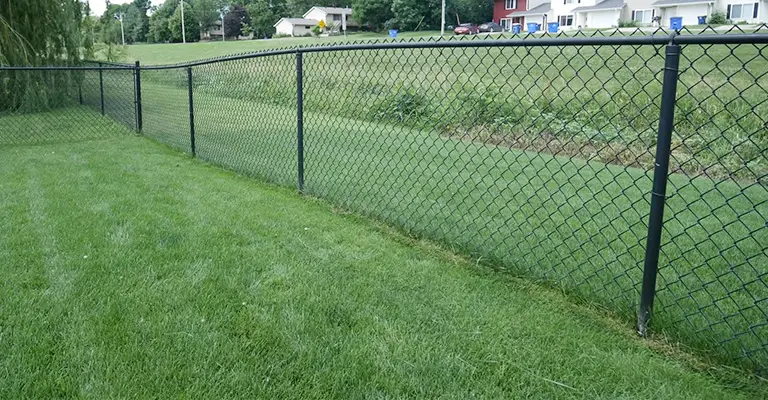
There are a few steps you can take to prevent grass from growing under a chain link fence:
Install a physical barrier: One way to prevent grass from growing under a fence is to install a physical barrier, such as a piece of landscaping fabric or plastic edging, along the bottom of the fence. This will create a physical barrier that grass won’t be able to grow through.
Use herbicides: Another option is to use an herbicide, such as a non-selective herbicide or a grass-specific herbicide, to kill the grass under the fence.
Be sure to follow the instructions on the herbicide label carefully and take precautions to protect any desirable plants in the area.
Maintain the grass on the other side of the fence: Regularly mowing and trimming the grass on the other side can help prevent it from spreading under the fence.
Keep the area clear: Regularly removing debris or weeds growing under the fence can also help prevent grass from taking hold.
Consider replacing the grass with a ground cover: If you’re having a particularly difficult time preventing grass from growing under the fence, you might consider replacing the grass with a ground cover less prone to spreading, such as a low-growing shrub or a ground cover plant.
DIY Steps To Prevent Grass From Growing Under a Chain Link Fence
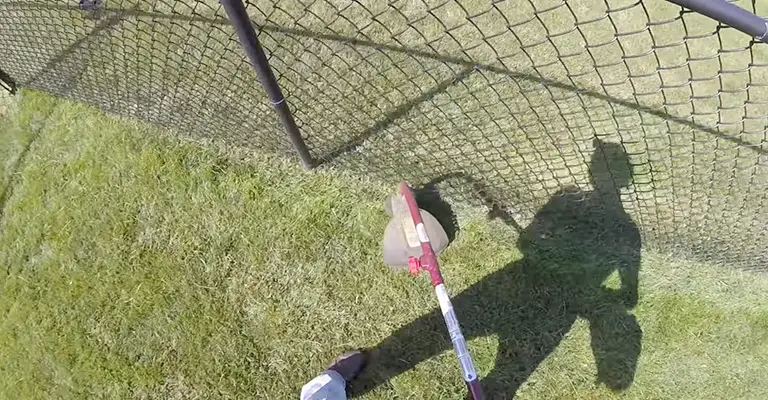
Chain link fences function well for defining your property line and securing your yard space, but they are a burden for lawn maintenance.
A string trimmer is required to maintain the greenery under the fence because your lawnmower cannot reach it.
In addition to making maintenance easier, stopping grass from growing under the fence makes the fence line more attractive. Mulch or rocks can prevent grass from growing under the fence for a finished look.
Step 1:
Using stakes and string, mark a line at least 6 inches into the yard from the fence. To ensure an even line, measure several locations between the fence and the string.
The distance you mark on the inside of the fence should match the distance you marked on the outside if the structure is not located on your property line. Mark the area where you are going to mulch with this string.
Step 2:
You should dig down 1 to 2 inches deep along the string with the sharp end of a garden spade. You can use a spade to remove the grass along the fence line. You must be careful not to bend the chain link fence’s bottom edge.
Step 3:
According to the University of California, spray a premixed glyphosate herbicide on any grass still under the fence that you cannot reach with your spade.
It is best to apply herbicides directly to grass on days without wind to prevent them from spreading to nearby plants.
Step 4:
As today’s homeowner instructs, trim the landscape fabric so that it matches the exposed soil width, then place it under and around the fence line. Keep the fabric in place by putting landscape staples about a foot apart.
Step 5:
Use mulch or pea gravel if you want to cover the landscape fabric. Cover the grass with a layer of cover material that’s even with the grass around it.
Different Ways To Keep Grass From Growing on Fence Line
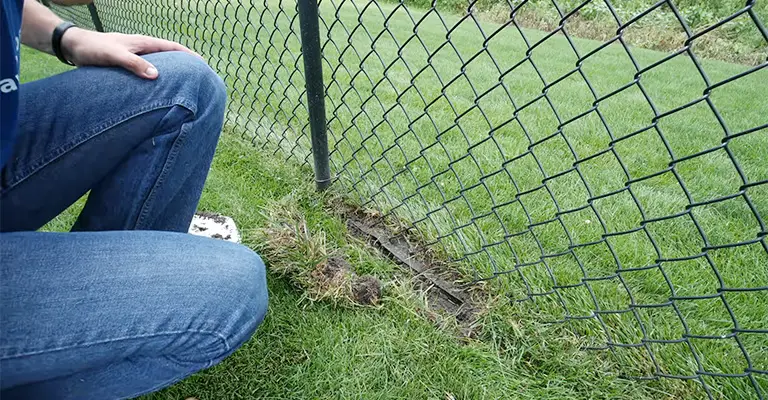
How can anyone not love the sight of a lush, immaculate, freshly mowed lawn? A chain-link fence or another type of privacy fence can make it challenging to maintain because grass and weeds grow underneath.
You’ll have to find other means to keep grass and weeds from growing under chain link fences. The following prevention methods have been proven to work.
Ensure weeds and grass do not grow under your fence to keep your lawn looking its best. To do so, follow these steps.
1. Cover with Landscape Fabric
Place mulch or small rocks in the trench, then cover it with landscape fabric.
You can use landscape staples about a foot apart to hold the fabric, then cover it with mulch or pea gravel.
Make sure the material is spread evenly over the fabric, so the staples don’t pull up.
2. Use Vinyl Strips
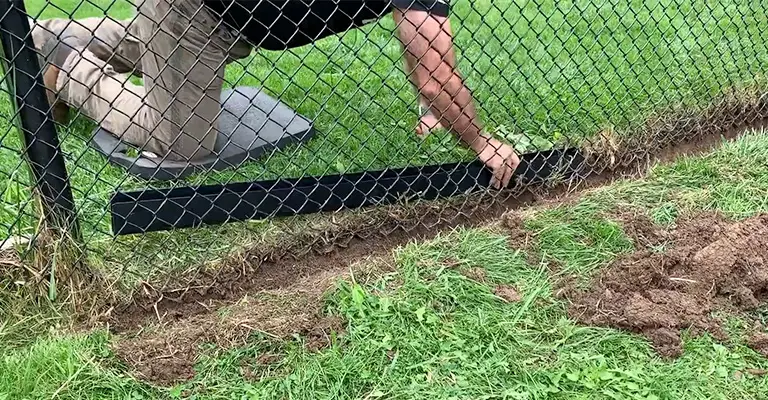
You can apply vinyl strips to prevent grass from growing on chain-link fences. Using at least 6-inch-wide strips for the entire area is recommended.
3. Spray An Herbicide
It is possible to kill grass using an herbicide. However, you should always use a homemade or organic herbicide instead of a chemical-laced product, as this adversely affects the local ecosystem.
Using vinegar in your garden is easy to control and kill weeds. Use vinegar as a spray bottle to apply the solution to the weeds in the morning before the winds pick up. There is a possibility that vinegar could harm other plants.
4. Spread Mulch
Make a trench, fill it with mulch, and then cover it with landscape fabric. Besides preventing (windblown) seeds from rooting, it will also make it easier for you to pull weeds when they appear.
5. Dig A Trench
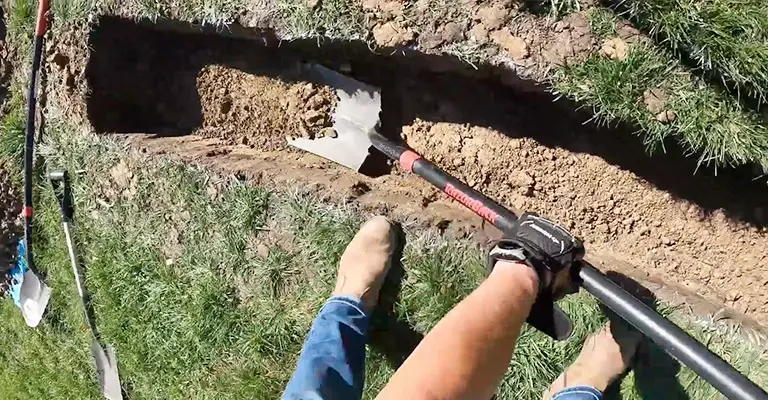
Get a garden spade and dig a few inches deep along the fence line to get rid of grass and weeds. Keep the fence’s bottom edge from being bent.
What About Mow Strip?
The Mowstrip is a plastic barrier that goes around fence bottoms. Trimming around fences and posts is no longer necessary with the Mowstrip.
With this technique, you won’t have to use chemicals or a trimmer to prevent weeds from growing.
Weed barriers like Mowstrip are easily installed under fences that prevent grass or weeds from growing. There are several types of fences that the Mowstrip is compatible with, including chain link fences, wood fences, and PVC fences.
There are also several ways you can use the Mowstrip, including dog kennels, storage bins, playgrounds for children, cemeteries, daycare centers, and baseball fields.
UV inhibitors are added to the HDPE (plastic) material to make the Mowstrip durable. A unique design prevents this rusted, rotted, or disfigured item from deteriorating.
There is only one-color option for the Mowstrip, which gives the appearance of a constantly manicured lawn.
How To Maintain A Chain Link Fence For Better Security?
You can see through chain link (and wire mesh) fencing, which makes it a great security solution.
Your fence mustn’t provide hiding spots or blind spots for animals. Understanding what is happening outside the fence is crucial.
If plant materials are allowed to block the view through a fence, their security value is reduced.
Low-lying Vegetation Pressure – Mowed Lawn, Stone/Gravel Areas
The width of the strip does not have to be more than one foot when the only vegetation is mowed grass.
Maintaining this narrow strip of lawn, free of grass and weeds, will make mowing easier, look well-kept, and eliminate the need to weed-eat regularly.
Eliminate Weeds And Other Vegetation To Prevent Fence Damage
In addition to preventing damage to the fence, avoiding plants also prevents it from deteriorating. Tree limbs and tree branches can damage fences if they fall on them.
In the long run, plants can cause a fence to rust because they hold moisture on it. Furthermore, a clean fence line eliminates habitats for damaging animals such as groundhogs, mice, rats, skunks, and opossums.
Trees, weeds, and other woody plants can also push up the bottom of a fence, which makes it possible to crawl under it.
Someone can climb over the fence easily because of this vegetation. Additionally, it increases the weight of the fence, compromising its integrity.
Create a Clear-Zone
The clear zone consists of areas on either side of the fence that have no vegetation and provide an unobstructed view to reduce the possibility of intruders being detected.
It is important to note that the size of the clear zone varies depending on the level of security required.
Typically, a clear zone in a commercial setting is three to five feet wide, while a facility that requires a higher level of security may have a clear zone up to thirty feet wide.
Don’t Let Plants Push Us the Bottom of Your Fence
It’s easy for someone to crawl through fences when plants push up at the bottom – making it easy for them to push up the bottom of a fence. Due to this, a significant amount of strain can be placed on the fence.
Final Words
You may consider hiring a professional landscaper if the above methods have failed to remove weeds and grass under the fence line.
The rate for a crew of two landscapers averages $50 to $100 per hour. For quotes and consultations, you should contact your local landscaper.







